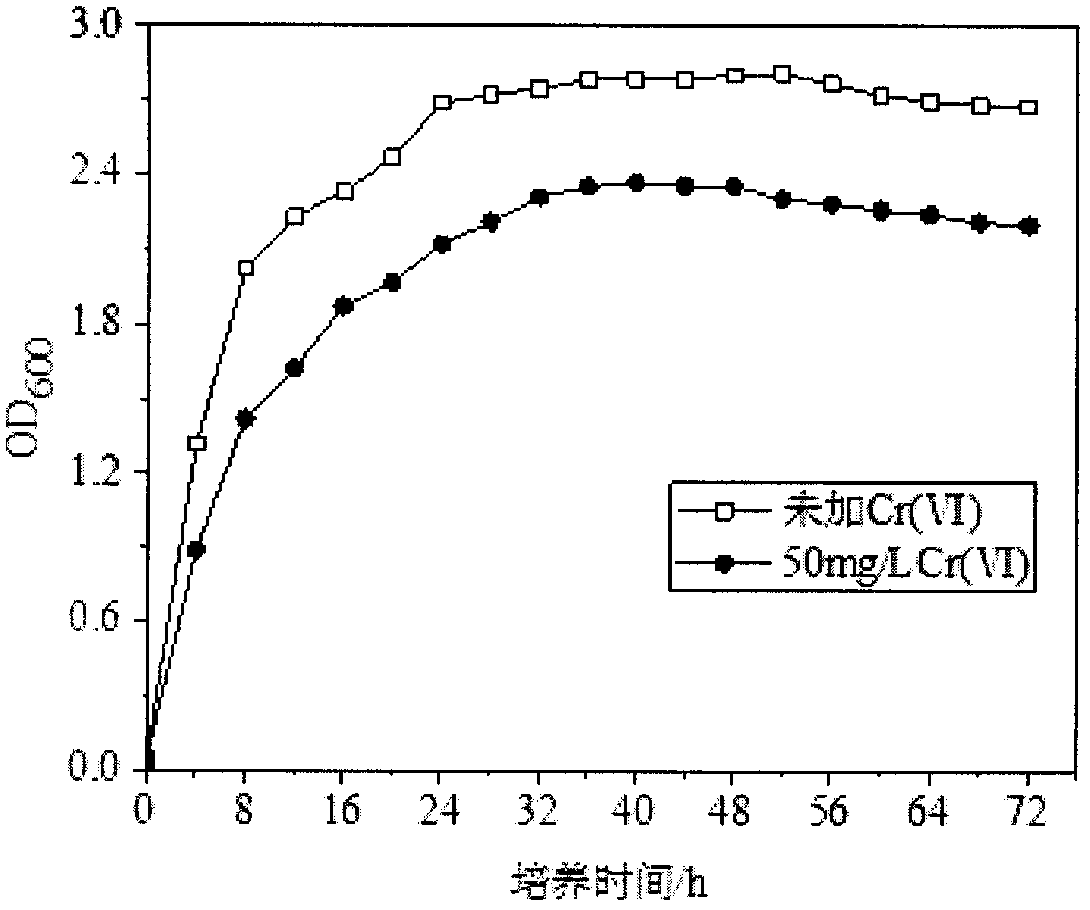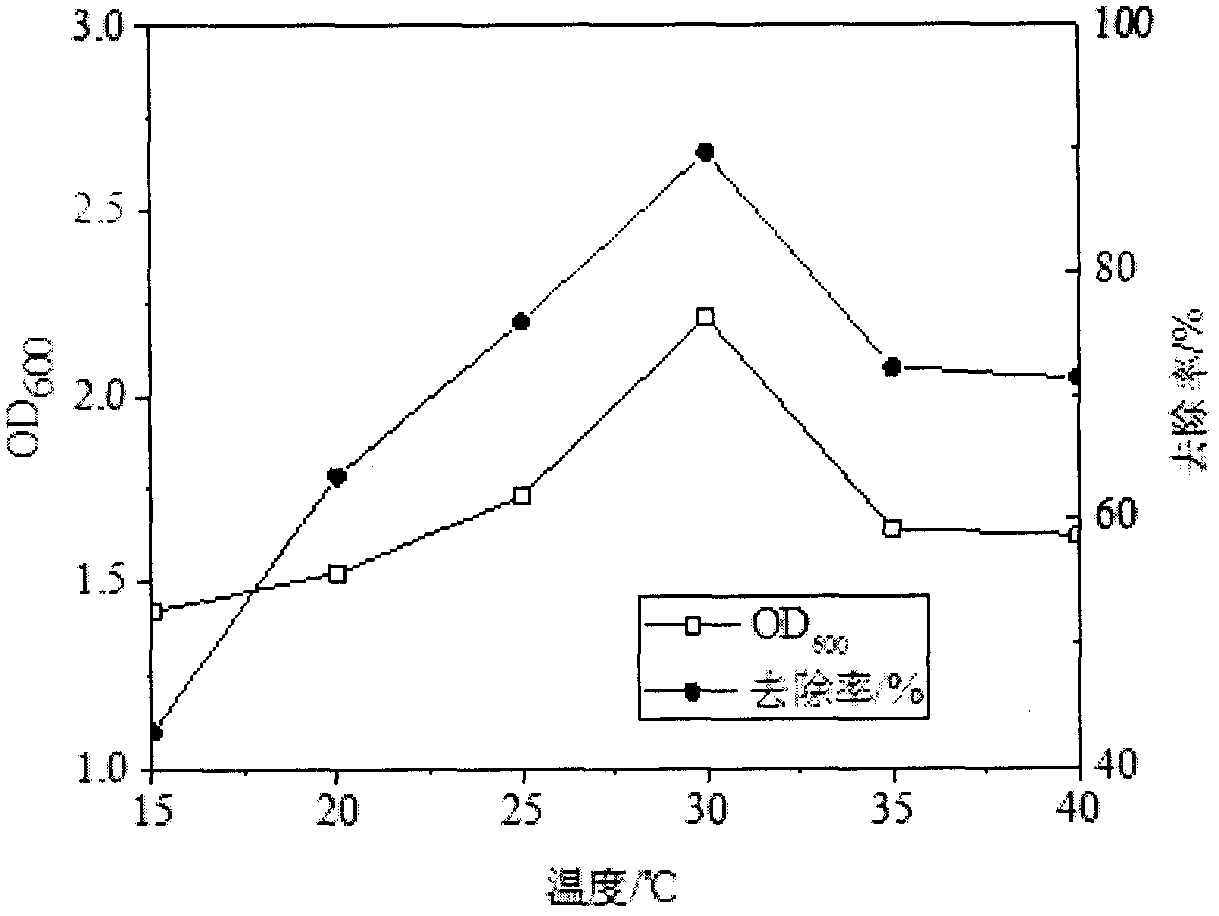Identification and culture methods for Cr(VI) reducing bacteria
A culturing method and technology of bacterial culture medium are applied in the identification of Cr-reducing bacteria and the field of culturing, which can solve the problems of secondary pollution, high cost, and difficulty in promotion.
- Summary
- Abstract
- Description
- Claims
- Application Information
AI Technical Summary
Problems solved by technology
Method used
Image
Examples
Embodiment Construction
[0027] The present invention will be further described in detail below in conjunction with the accompanying drawings and through specific embodiments. The following embodiments are only descriptive, not restrictive, and cannot limit the protection scope of the present invention.
[0028] The identification of Cr (VI) reducing bacteria and its culture method, its steps are:
[0029] (1) Strain screening
[0030] According to the determination of the growth of each strain at different Cr(VI) concentrations, the strain with the strongest tolerance to Cr(VI) was screened out. A total of 25 chromium-resistant strains were screened out in the experiment, named ZJ-1, ZJ-2... ZJ-24, ZJ-25, of which 5 strains can grow in 200mg / L Cr(VI) solution, 5 strains can Growing in 150mg / L Cr(VI) solution, 8 strains can grow in 100mg / L Cr(VI) solution, 7 strains can grow in 50mg / L Cr(VI) solution, and the removal rate of Cr(VI) reaches There are 8 strains with more than 50% of ZY-8. Not only can...
PUM
 Login to View More
Login to View More Abstract
Description
Claims
Application Information
 Login to View More
Login to View More - R&D
- Intellectual Property
- Life Sciences
- Materials
- Tech Scout
- Unparalleled Data Quality
- Higher Quality Content
- 60% Fewer Hallucinations
Browse by: Latest US Patents, China's latest patents, Technical Efficacy Thesaurus, Application Domain, Technology Topic, Popular Technical Reports.
© 2025 PatSnap. All rights reserved.Legal|Privacy policy|Modern Slavery Act Transparency Statement|Sitemap|About US| Contact US: help@patsnap.com



